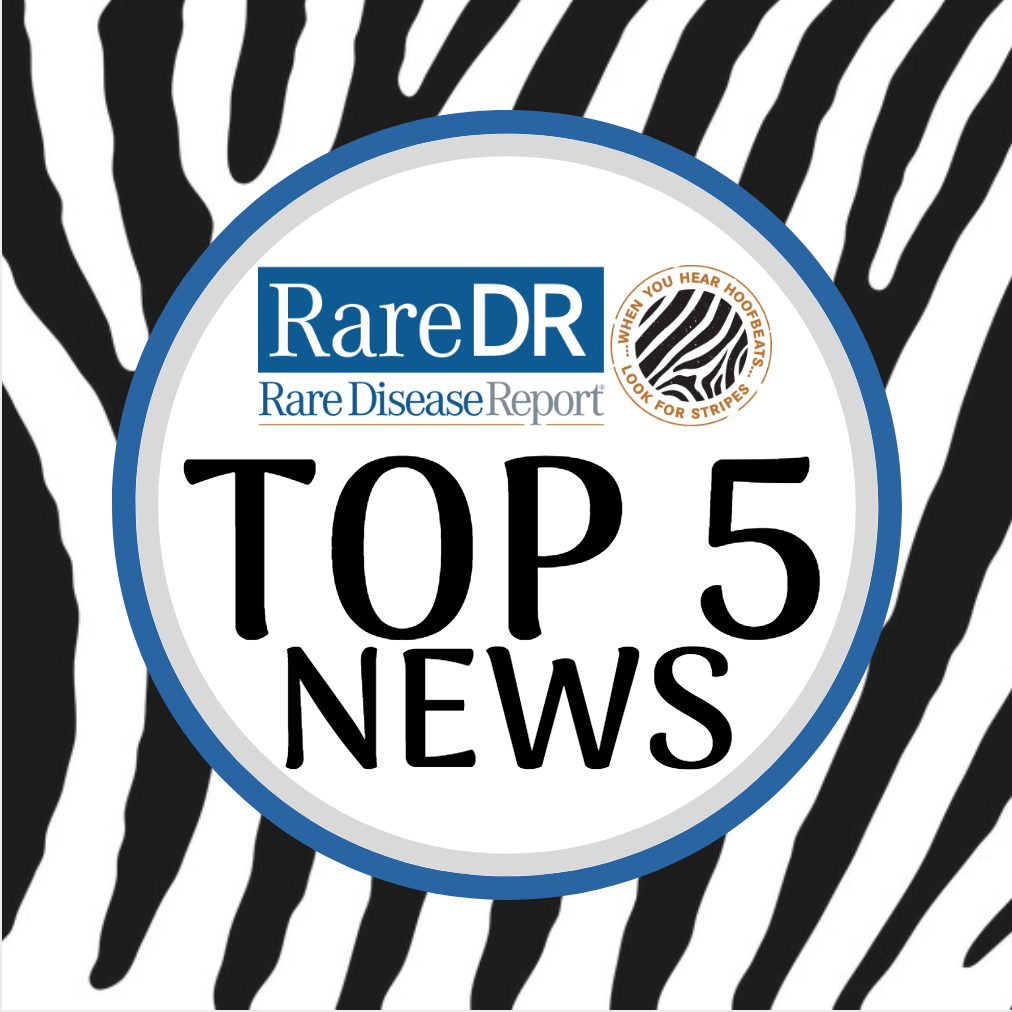Article
Top 5 Rare Disease News of the Week—June 17, 2018
Author(s):
Stay up-to-date on the latest rare disease news by reading the top 5 articles of the week.

#5: Researchers Prove Rasmussen’s Encephalitis Is an Autoimmune Disease
New evidence suggests that Rasmussen’s encephalitis is an autoimmune disease.
The degenerative disease most often develops in pediatric patients with unknown causes and presents with recurring epileptic seizures that resist traditional treatments. In serious cases, the frequency of seizures is reduced by separating the two brain hemispheres—or removing one hemisphere altogether—and coping with the subsequent neurological consequences.
#4: FDA Grants Orphan Drug Designation to New Treatment for Rett Syndrome
Read more about Rasmussen’s encephalitis.The US Food and Drug Administration (FDA) has granted Orphan Drug Designation to AMO Pharma Limited’s investigational therapy AMO-04 for the treatment of Rett syndrome, a rare childhood neurodevelopmental disorder.
AMO-04 is a glutamate modulator; it has displayed early-stage promise for Rett syndrome treatment based on screening by the Scout Program, which is a drug discovery screen in a mouse model of the disease sponsored by Rettsyndrome.org.
#3: ALS and FTD Novel Small Molecule Therapy Receives Fast Track SIBR Grant
Read more about the new treatment for Rett syndrome.AcuraStem announced that its amyotrophic lateral sclerosis (ALS) and frontotemporal dementia (FTD) novel small molecule therapy, AS2015, has been granted a 3.7-million-dollar Small Business Innovation Research (SBIR) Fast-Track grant by the National Institute of Neurological Disorders and Stroke (NINDS) to continue research for the treatment’s development.
“The team at AcuraStem is grateful for this grant as it will allow us to progress more rapidly toward a treatment and set us on a path toward a cure for ALS,” stated AcuraStem president and co-founder Justin Ichida, PhD, in a recent statement. “The award is intended to facilitate the advancement of a new drug candidate for ALS leveraging patient neurons and engaging an entirely new target that focuses on the endosomal trafficking pathway.”
#2: New Research Finds Cause of Hypokalemic Periodic Paralysis
Read more about the ALS & FTD small molecule therapy.Researchers from the University of Washington School of Medicine in Seattle have discovered what causes hypokalemic periodic paralysis, a rare genetic disorder that causes attacks of muscle weakness and paralysis.
An estimated 1 in 100,000 individuals have the condition also known as HOKPP, HypoKPP, or HypoPP. Individuals with HOKPP typically experience their first episode of the condition during childhood or adolescence. During an attack, HOKPP can cause a temporary inability to move muscles in the arms and legs, which can last for hours or days. A HOKPP attack can also affect eye muscles, breathing, and swallowing. Triggers of an attack can include high-carbohydrate meals and resting after exercise.
#1: Ray Comenzo, MD, Discusses ANDROMEDA Trial in AL Amyloidosis Patients
Read more about hypokalemic periodic paralysis.At the 2018 American Society of Clinical Oncology (ASCO) Annual Meeting in Chicago, Rare Disease Report® sat down with Ray Comenzo, MD, investigator of the ANDROMEDA trial and director of the John C. Davis Myeloma and Amyloid Program at Tufts Medical Center, and professor at Tufts University School of Medicine, for an exclusive interview regarding the ANDROMEDA study, which evaluated the efficacy of subcutaneous daratumumab (DARA SC) and cyclophosphamide, bortezomib, and dexamethasone (CyBorD) as a combination therapy in newly diagnosed light chain (AL) amyloidosis patients.
Rare Disease Report® (RDR®): Could you explain the ANDROMEDA trial in light-chain (AL) amyloidosis patients and the significance of its findings?
Comenzo: The ANDROMEDA trial is a trial that is extremely important for patients who have systemic light chain or AL-amyloidosis. I’d like to begin by thanking Janssen Oncology, the investigators on the study, and, particularly, the brave patients who enrolled on the first part of the study, which is called a ramp-in.
The study itself is a phase 3 trial asking whether or not the addition of the monoclonal antibody daratumumab to a standard treatment combination called CyBorD will benefit patients who are newly diagnosed with systemic amyloidosis. Daratumumab is an approved agent for multiple myeloma. In this study, the ANDROMEDA trial, it’s being used in a novel way because the preparation of daratumumab is being given subcutaneously not intravenously.
This is a big deal for patients with systematic AL amyloidosis because these patients often have some degree of cardiac compromise; therefore, getting IV infusions can be challenging for them. The subcutaneous administration of daratumumab is an exciting option if it is safe and if it works. The news from the ANDROMEDA trial being presented here at ASCO in June 2018 is good news, 2 dozen patients were treated in the ramp-in, there were no safety problems with the subcutaneous daratumumab, and all of the 2 dozen patients received daratumumab with CyBorD.
The response rates were really stunning even though these patients in the ramp-in didn’t go through the entire course of therapy before the responses were scored. They are still getting treated, obviously, but three-quarters of patients recorded very deep responses.
This is extremely encouraging. The trial was approved by the US Food and Drug Administration (FDA) to begin randomization, which means that in 30 countries patients will be offered the study and will be randomized to receive either daratumumab with CyBorD or standard therapy of CyBorD alone.
If daratumumab and CyBorD work better than CyBorD alone, we have a new standard of therapy for patients with light chain amyloidosis. In addition, the study is designed to allow patients to have their blood stem cells collected after 6 months of treatment. This means that they will have the additional option of undergoing a stem cell transplant in the future should they need to.
It’s a very exciting prospect for the newly diagnosed amyloid patients of the future to potentially have a combination of 4 drugs that are safe and that are almost 100% effective. That’s what we expect; we expect many, many patients to be effectively treated and to recover.
Read more about the ANDROMEDA trial.




